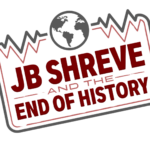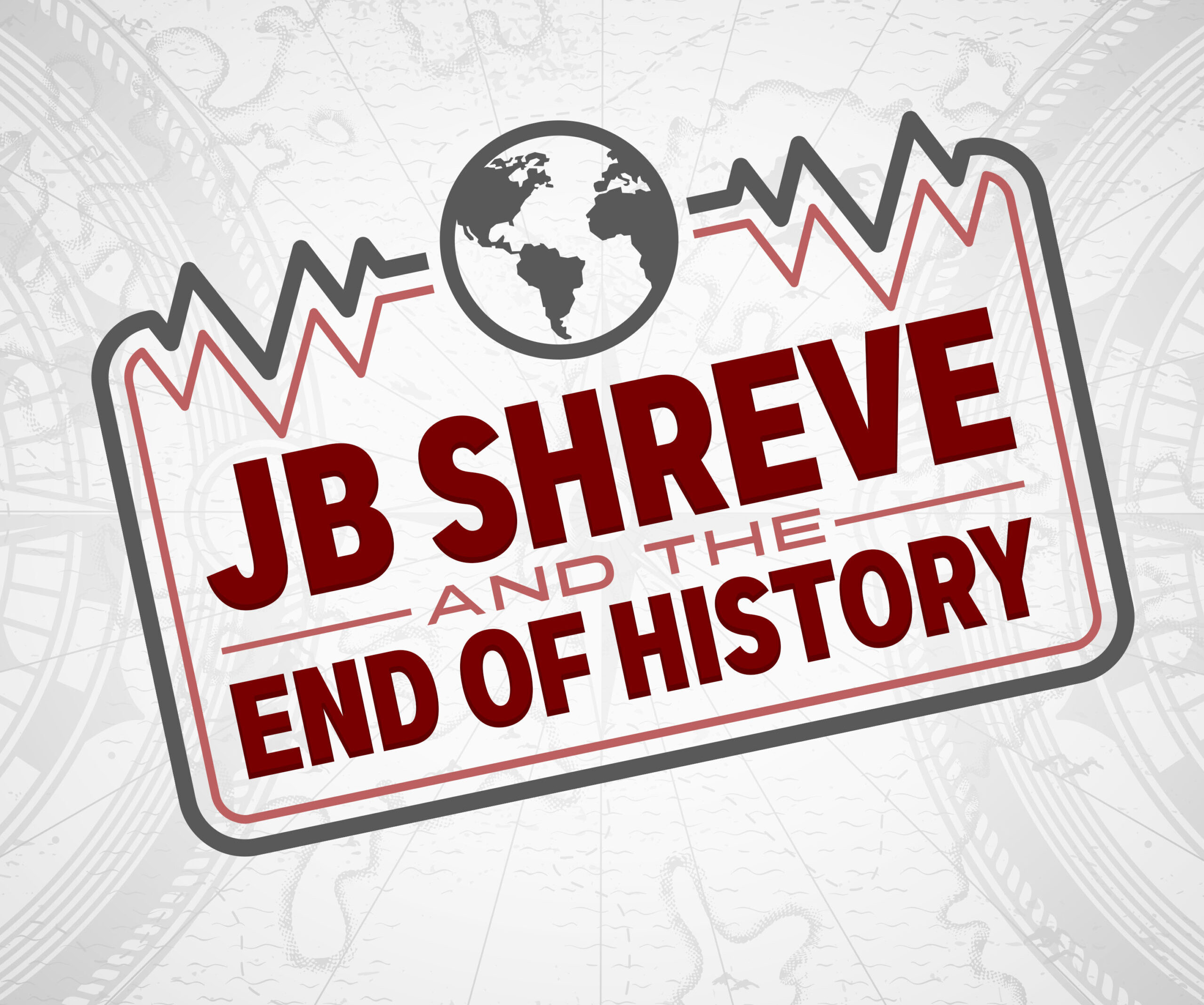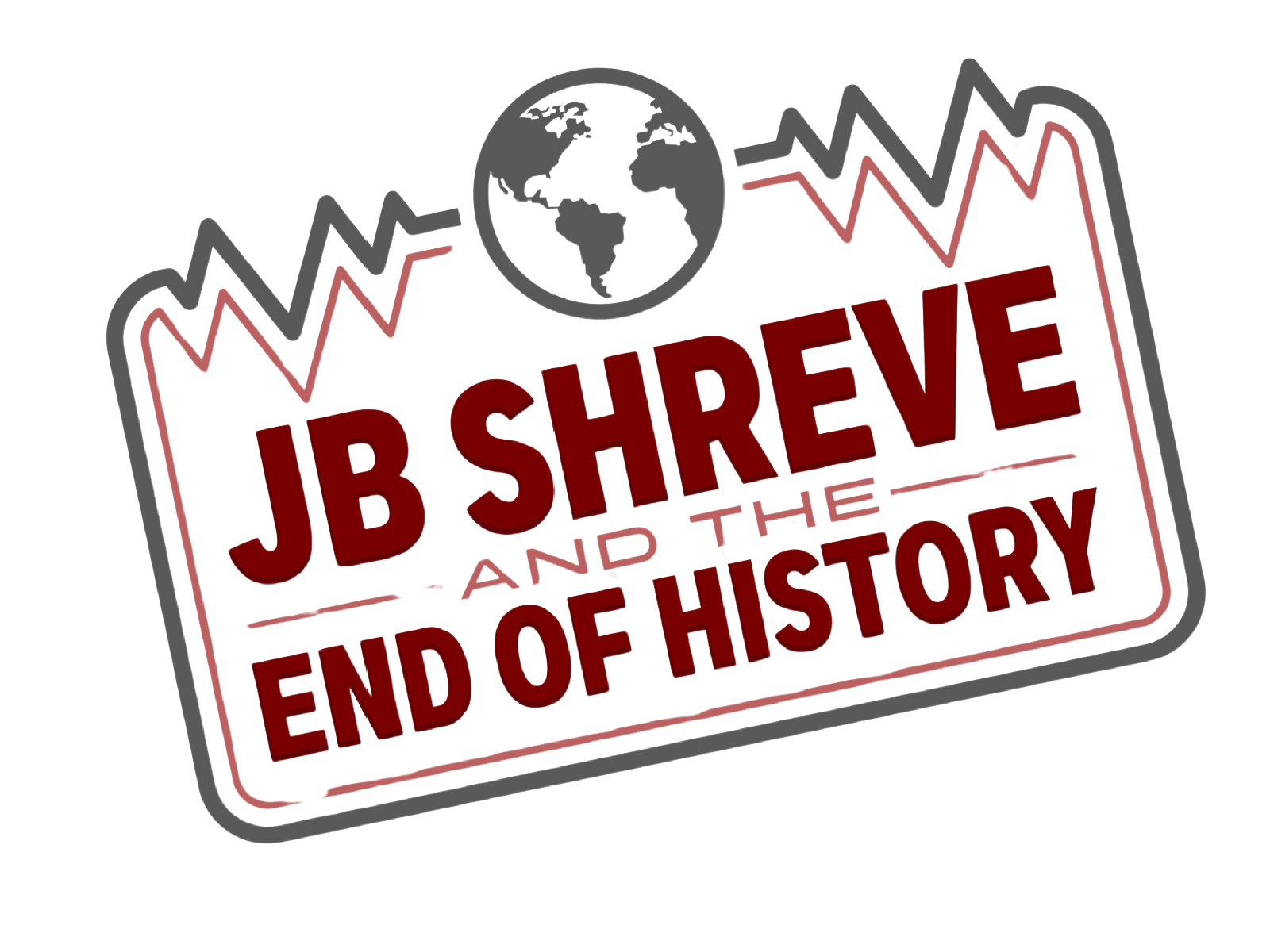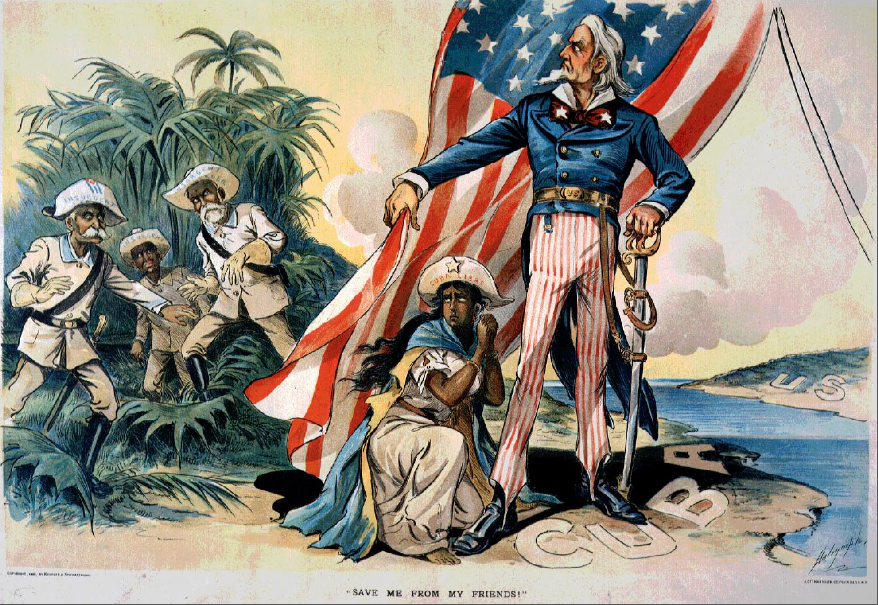
(This is part 2 in my blog series that examines the historical relationship and involvement of the US with Latin America that contributed to the modern dysfunctions of poverty, violence, and instability we frequently observe. Part 1 looked at the historical relationship between the US and Mexico. Today we look at American imperialism in Latin America in the early 20th century.)
Mexico was not the only place of American involvement south of the border in the second half of the 19th century. As the United States spread from sea to shining sea its desires for imperialist conquests beyond its borders soon brought Latin America to the greater attention of many American leaders.
Subscribe to JB Shreve & the End of History
The decline of Spain as a global power enticed the US to reach out for Spanish territories in the western hemisphere. The Spanish American War of 1898 resulted in the conquest of Puerto Rico. Cuba became a protectorate. Territory and growing demand within the sugar industry made both of these territories appealing to US business interests and policymakers.
American Involvement in Puerto Rico
It was at first believed that Puerto Rico could be incorporated into the United States much like other territories had been as America moved west across the plains and prairies of the United States. When General Nelson Miles arrived in Puerto Rico he promised to protect the life, liberty, and happiness of Puerto Ricans and their property. Perhaps one day Puerto Rico could even become a state.

But in the early years of the 20th century, a series of legal opinions in the United States determined that territories gained from Spain, including Puerto Rico, were made up of “alien races” who could not understand “Anglo-Saxon principles.” To this end, the US Constitution did not apply to them and there was no method for a territory such as Puerto Rico to become a state.
Meanwhile, America business interests wrecked the Puerto Rican economy as they shifted the local agriculture system from coffee to sugar. This produced widespread poverty throughout the country. To this day Puerto Rico is dominated by US investors. US companies pay no taxes to the Puerto Rican state. Puerto Rican citizens cannot vote for President and have no representatives in Congress they can vote for.
America and the Republic of Cuba
Part of the rallying cry of the Spanish-American War of 1898 was “Don’t forget the starving Cubans!” American politicians reported widespread corruption and atrocities by the Spanish against the people of Cuba that demanded an American response.

After establishing Cuba as a protectorate of the US following the war conditions were set for the US sugar industry and economy to benefit from the victory against Spain. Cuban independence and the Republic of Cuba were born in 1902. Included within the new Cuban constitution was the right of the United State to intervene domestically and also to supervise the new nation’s economy and foreign affairs.
Resistance to the US sprouted early and required US military intervention within the first decade of the Cuban Republic. A trend toward the US sponsorship and support of strongmen on the island nation soon gave birth to widespread corruption that would plague Cuba’s society and economy for the next half-century.
More and more Cuban land was converted to sugar production to make room for a sugar boom during and after World War I. When the boom ended in 1920, Cuba’s markets and local economy collapsed. This opened the door for more US business interests in the country. Known as the Dance of the Millions, this economic upheaval is noted by historians to have ruined Cuba financially.
Cuba’s leaders tried to mend the economy with new enticements for tourists, including gambling and prostitution. The rampant spread of corruption and foreign investment led to widespread discontent among the people of Cuba. The resentment and divisions here ultimately led to the Cuban Revolution and the rise of Fidel Castro in 1959
This scene from Godfather 2 captures the setting in Cuba before the revolution.
The Banana Wars
In between the Spanish-American War and the Great Depression, the United States was involved in a number of incursions into Latin America. All of these degraded the rule of law, increased instability in the region and intensified the struggle for the local populations who were confronted by poverty, corruption, and despots.

Actions were launched against the Dominican Republic in 1902, 1904 and 1914. At times these were punitive in nature and also intended to teach the Dominicans a lesson. The US then occupied the Dominican Republic from 1916 to 1924.
In Nicaragua, the US set up an occupation from 1912 to 1933. The official justification was to teach democracy and good governance to the rulers of the country but in reality, the US was working to prevent other foreign powers from setting up a presence in the country. They were specifically concerned about a new canal being built there. Various revolutions were stirred up during the US occupation and when they left revolutions and assassinations continued. A military dictatorship that lasted four decades took over in the wake of the US occupation.
The US involvement with Haiti is shocking and deserves a post all to itself. (Someday I’ll tell that story.) In 1915 the US occupied Haiti with more than 300 marines out of concern that instability there would be a draw to other foreign powers. This was after the military seized Haiti’s gold reserves a few months earlier and took them to New York. The US military presence in Haiti led to ongoing revolutions and uprisings against which the US responded with violent force. Haitian leaders were assassinated in what was known as the Cacao Wars. It is believed that 2,000 Haitians were killed in the fighting. The US occupation of Haiti was maintained until 1934 but even after that, the US continued to control Haiti’s external finances until 1947.
Panama Canal

The idea of a canal linking the Atlantic Ocean to the Pacific Ocean through the isthmus of Panama in Central America was not a new one in the early 20th century. The French team who worked to build the Suez Canal in Egypt tried and failed to build a canal in Panama. When President Theodore Roosevelt came to office however, this achievement became one of his priorities.
The isthmus was obviously not on American soil so an agreement was necessary to give America access to the property that would become important to the global economy and security once the canal was completed. Roosevelt made an offer to the Colombians, who controlled the land. The agreement was to give the United States a 100-year lease of the land upon which the canal would be built along with the rights to renew the lease. Roosevelt’s offer was seen as a violation of Colombia’s sovereignty in the region and terribly unfavorable. The Colombian Senate rejected the offer but did provide a counteroffer more financially favorable to them, thus not eliminating the prospects for a canal.
President Roosevelt was incensed by Colombia’s denial of his offer and opted for an alternative route. He would take the land allotted for the Panama Canal by force.
Uprisings between the people of Panama and Colombia had been ongoing for some time before this, but now the Panamanians had the support of the United States. American soldiers from the US warship Nashville landed in the region and declared Panama an independent nation. The US aided Panama’s rebels then cut off the railroad lines which Colombia was using to dispatch its military and put down the rebellion. In addition, the warship Nashville was set in place to discourage further Colombian troops from entering the region.

On November 6, 1903, the United States recognized the independent nation of Panama. Less than two weeks later an agreement was signed between the new government of Panama and the United States, granting the US exclusive and permanent access to the canal zone. For its part, Panama received $10 million and later an annuity of $250,000. In a final touch to assure the brazenness of Roosevelt and America’s imperialistic maneuvers were noted by both contemporaries and history, negotiations of the agreement with Panama were carried out by the US Secretary of State and the owner of the Panama Canal Company.
- See also: Roosevelt’s Imperialism
The net present-day value of the Panama Canal is $6 billion. The US cut of that is $1.6 billion. Meanwhile, Panama has been plagued with instability, domestic unrest, and dictators after the nation’s founding to hold America’s great canal. The Panama Canal significantly impacted Panama’s agricultural system by reducing the water supply available to farmers and ranchers. More than 60% of the people of Panama lived in poverty making it nearly impossible for the nation to upgrade its irrigation systems.
In the second half of the 20th century, multiple coup attempts in Panama resulted in American military incursions. Frequently American sponsored dictators were put in place to rule over the country.
In 1999 Panama gained control of the canal although the US maintained the rights to military involvement to protect the canal zone. Panama’s economy has grown significantly since that time. As noted by the release of the 2016 Panama Papers however, Panama has today become one of the tax havens for the rich to hide their money. Accordingly, corruption in Panama persists.
Read the Entire Series Why Is Latin America So Dysfunctional?:
-
- Why Is Latin America So Dysfunctional? Part One – The US and Mexico
- Why is Latin America So Dysfunctional? Part Two – American Imperialism in Latin America
- Why Is Latin America So Dysfunctional? Part Three – United Fruit Company
- Why Is Latin America So Dysfunctional? Part Four – Cold War, Dirty Wars, Drug Wars, Economic Wars
Subscribe to JB Shreve & the End of History



